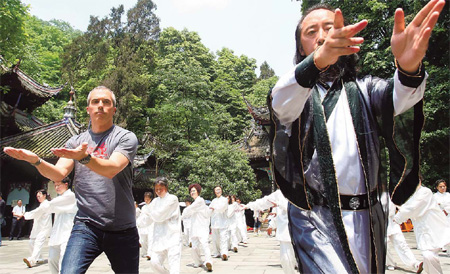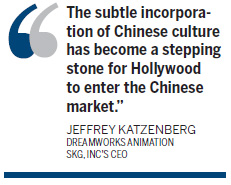Life
Chengdu has starring role in Kung Fu Panda 2
Updated: 2011-06-17 07:37
By Huang Zhiling (China Daily)
|
Kung Fu Panda 2 production director Raymond Zibach learns shadowboxing with Taoist master Liu Suibin on Mount Qingcheng during DreamWorks' creative team's first trip to Chengdu. Yang Gang / for China Daily |
|
|
It's no accident that Sichuan's provincial capital Chengdu features heavily in Kung Fu Panda 2. Huang Zhiling reports.
While Kung Fu Panda 2 has made audiences roar with laughter since it hit mainland screens on May 28, it has also put grins on the faces of publicity officials in Sichuan's provincial capital Chengdu. That's because they have managed to put their internationally obscure city on the world's silver screens. The animated flick incorporates many cultural icons of Chengdu, which hosts the world's largest captive panda breeding base.
"Mount Qingcheng, spicy dandan noodles, mapo tofu and hot pot all appear in Kung Fu Panda 2," chief of the city's information office Xiong Yan says.
That's because the production team - none of whom had seen a real panda before working on the sequel - visited the city twice.
The visits were initially part of a plan by the Chengdu government to let people know the city was safe for tourism after the 8.0-magnitude Wenchuan earthquake left nearly 90,000 people dead or missing on May 12, 2008.
The reasoning of the crisis public relations team that was created after the disaster was people would know Chengdu wasn't dangerous if a Hollywood team visited, Xiong explains.
But the move inadvertently also fits into a larger trend in which Hollywood is actively courting Chinese audiences' interest by incorporating more elements from the country in its films.
Chengdu's information office contacted Paramount Film Group's Shanghai office to invite DreamWorks Animation SKG, Inc's CEO Jeffrey Katzenberg and his team to the city, Xiong says. Katzenberg had expressed concern about the pandas' habitat when Kung Fu Panda premiered in Cannes, France, three days after the quake.
He and his team arrived in Chengdu for a two-day stay in October 2008. They visited the Chengdu Research Base of Giant Panda Breeding, Mount Qingcheng and the Jinsha Site Museum.
Katzenberg and his crew also sampled local specialties, such as dandan noodles. The CEO enjoyed his stay so much that he delayed his departure by private plane by two hours, Xiong says.
Chengdu's publicity department chief He Huazhang explained at a banquet for the guests that he hoped to cooperate more with DreamWorks.
Katzenberg proposed including Chengdu elements in the sequel, Xiong says.
Their experiences of petting a newborn panda - later named Ah Bao after the film's protagonist - at the breeding base served as the inspiration for the development of Po's character in the second film, Xiong says.
"It was in the base that the baby panda inspired the Kung Fu Panda character Po and that we got the inspiration for the image of Po's master, Shifu, from a red panda," the production director of Kung Fu Panda 2 Raymond Zibach says.
Katzenberg perplexed journalists in Chengdu by saying the reason Po's father is a duck would be explained in the sequel. It is, and Sichuan is also named as Po's birthplace in the film.
Mount Qingcheng provided abundant inspiration for DreamWorks' creative team. Upon arriving at the mountain's base, the team was greeted by about 50 disciples of the Qingcheng martial arts sect, who performed shadowboxing, Xiong says.
Peacock Lord Shen's graceful and fluid shadowboxing style is believed to come from the Taoist master Liu Suibin, who performed for the team.
The visitors were dazzled by the mountain's lush greenery and murmuring streams. Director Jennifer Yuh Nelson described the place as "Peace Valley".
They said they would likely include the mountain in the sequel. The wooden hut in the film is based on the likeness of Qingcheng's structures and the mountain's Pavilion of Nature is featured at the film's end.
"The pavilion is very interesting and inspiring, as it combines natural material with traditional architectural styles," Zibach says.
The Chinese characters for the famous mountain, which inspired many of the film's verdant landscapes, appear twice in the animated work.
Katzenberg, who says he believes China will be the world's largest film market in a decade, says the Kung Fu Panda franchise is a love letter from Hollywood to China.
China's film market has grown rapidly in recent years.
The cooperation between DreamWorks and Chengdu is a win-win situation, Xiong believes. Hollywood wants a larger slice of China's market, and China wants to build its image through Hollywood blockbusters, she says.
Kung Fu Panda raked in $600 million globally and 200 million yuan ($31 million) in China.
The box office value was much higher than expected for a film with a Chinese theme. DreamWorks decided to produce the sequel a week after it hit theaters.
The company expects to earn 600 million yuan at the Chinese box office because of the inclusion of more Chinese elements.
"The subtle incorporation of Chinese culture has become a stepping stone for Hollywood to enter the Chinese market," Katzenberg told an April 14 news conference in Los Angeles.
"The Chinese elements in Kung Fu Panda were well received by Chinese audiences, and the film broke the Chinese box office record for highest-grossing animated feature."
Kung Fu Panda 2 provides a more thorough depiction of Chinese culture, which hasn't always been done in Western movies, Korean director Park Jin Bum said.
Chengdu's publicity coup has served as a model for Chinese cities to use Hollywood blockbusters to build their image, Xiong says.
Shaanxi province's capital Xi'an has announced it will invest 200 million yuan to produce the film Love in Daming Palace. The film is a romantic drama about Tang Dynasty (AD 618-907) Emperor Xuanzong and his concubine Yang Yuhuan, directed by Oscar-winner Antoine Fuqua.
Specials
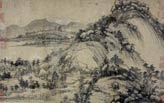
When two are one
After a separation of 360 years, Huang Gongwang's famous Dwelling in the Fuchun Mountains has been made whole again.
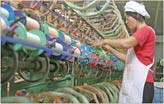
Wealth of difference
Rich coastal areas offer contrasting ways of dealing with country's development
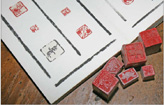
Seal of approval
The dying tradition of seal engraving has now become a UNIVERSITY major
